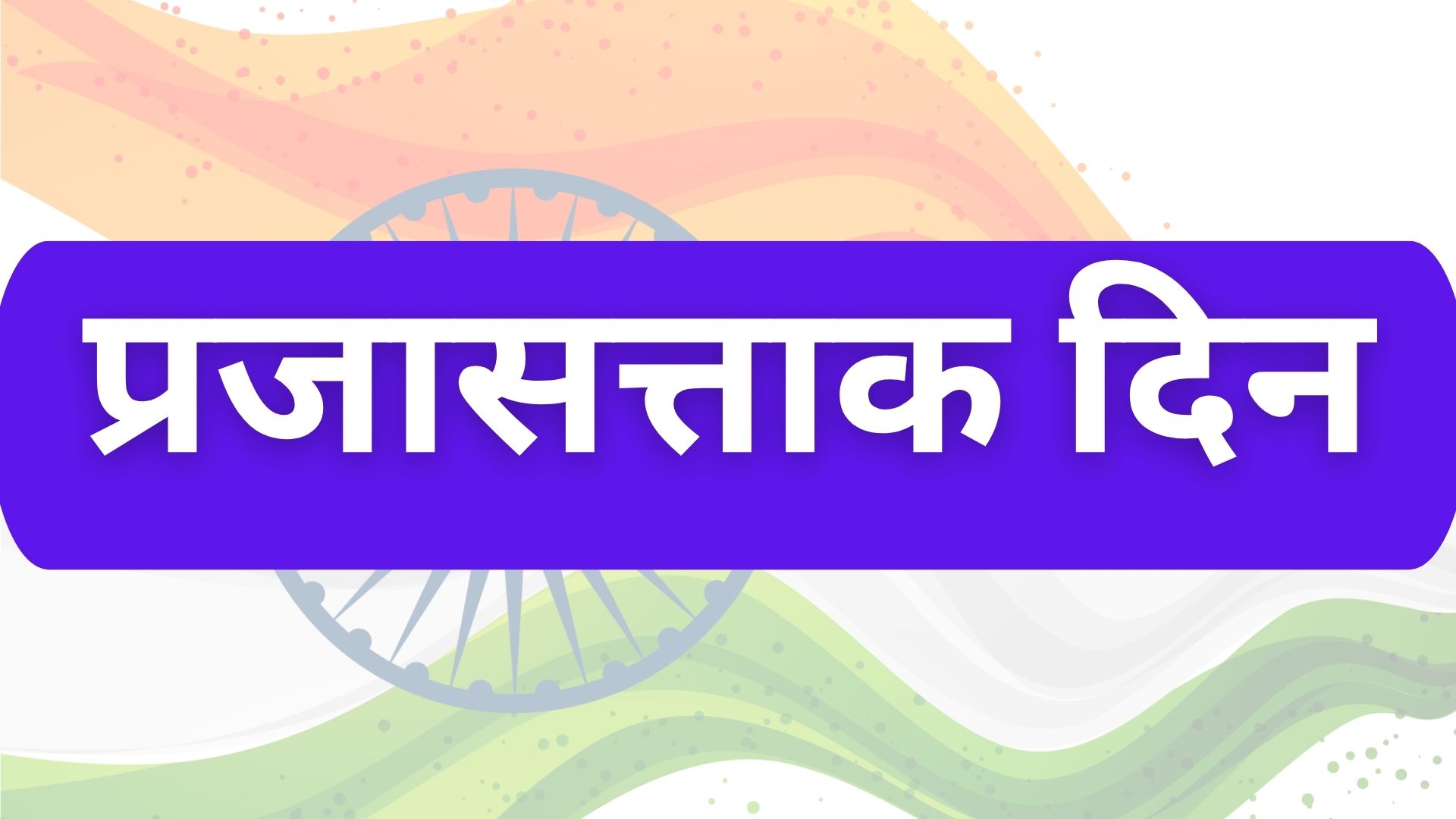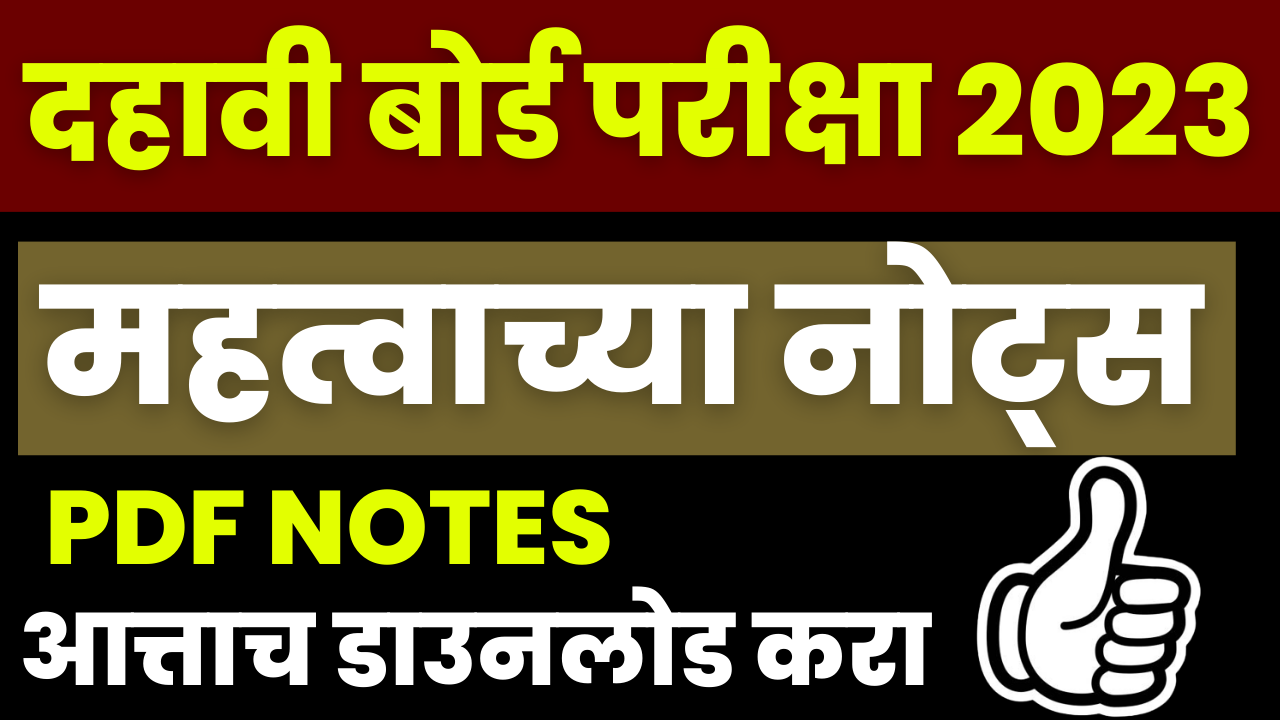इयत्ता दहावी | बोर्डाच्या परीक्षेसाठी महत्वाच्या नोट्स
खालील बटणांवर क्लिक करून तुम्ही प्रत्येक विषयांच्या नोट्स डाउनलोड करू शकता
इतर विषयांच्या नोट्स लवकरच अपडेट होतील.
इयत्ता दहावी बोर्ड परीक्षा २०२३ हि २ मार्च पासून सुरु होत आहे. या परीक्षेच्या अनुषंगाने या सर्व नोट्स खूप महत्वाच्या आहेत.

Q. 3 – B – Appreciation of the poem
टीप : या प्रश्नात पुस्तकामधील मधील Q.3(A) मध्ये दिलेली कविता सोडून इतर कोणतीही एक कविता तुम्हांला appreciation साठी (रसग्रहणासाठी) दिली जाईल. त्या कवितेचे रसग्रहण त्यासोबत दिलेल्या मुद्द्यांच्या आधारे करायचे असते. त्यासाठी कवितेच्या विविध अंगाची वैशिष्ट्यांचा/घटकांची माहिती असणे आवश्यक असते. कवितेचे रसग्रहण (appreciation) point format मध्ये लिहावे. सदर प्रश्न 5 गुणांसाठी असेल.
3.Read the given poem and write its appreciation with the help of the given points:
• Title: (1/2)
• Name of the poet: (1/2)
• Rhyme Scheme: (1)
• Figures of Speech (any 1): (1)
• Theme / Central idea (in 2 to 3 lines): (2)
Poem 1st – A teenagers Prayer
Each day brings new beginnings,
Decisions I must make.
I am the only one to choose
The road that I will take.
I can choose to take the road of life,
That leads to great success
Or travel down the darkened road,
That leads to great distress.
Please open up my eyes, dear Lord,
That I might clearly see
Help me stand for what is right,
Bring out the best in me.
Help, Lord, to just say “no”
When temptation comes my way,
That I might keep my body clean
And fit for life each day.
When my teenage years are over,
I know that I will see
That life is lived its very best
With you walking next to me.
Title – A Teenager’s Prayer
Name of the poet – J Morse
Rhyme scheme – The rhyme scheme of the poem is ‘abcb’
Figure of speech (Any one) – Apostrophe, Inversion
Theme / Central Idea – the theme of the poem is a teenager’s dilemma about making the right decisions. The responsibility of choice falls fully on him/her. A wrong decision may ruin the whole life. Hence the teenager in the poem prays to God for His help and guidance.
Poem 1.3 basketful of moonlight
(1) Title: The title of the poem is “Basketful of Moonlight.”
(2) The name of the Poet: The name of the poet is Sunil Sharma,
(3) Rhyme Scheme: There no rhyme scheme in this poem. This a poem is in free verse.’
(4) Figure of Speech: Repetition, alliteration, apostrophe.
(5) Theme/Central Idea: The central idea of the poem is the loneliness of a child in a remote village untouched by modern amenities. The child is too far from the modern urban life that even his remedy for the plight of his villagers seems quite innocent and plain.
2.1 – You start Dying slowly… (March ’20)
(1) Title: The title of the poem is-“You start dying slowly…”
(2) Name of the poet: This poem was written by the poet Pablo Neruda.
(3) Rhyme scheme: There is no rhyme scheme in the poem. It is written in ‘free verse’ style.
(4) Figure of speech (Any one): Apostrophe, Repetition, Antithesis.
(5) Theme/Central idea: (in 2 or 3 lines) The theme of the poem in short is like this: Life must flow and renew itself at every moment of its being. We live fully only when we enrich ourselves with new knowledge, wide experience, fresh emotions, daring encounters and exciting challenges. If we settle for a life that is stagnant, repetitive or conventional, we start dying slowly instead of living the life fully.
2.3) The Twins
(1) Title: The title of the poem is “The Twins’.
(2) Name of the poet: The name of the poet is Henry S. Leigh.
(3) Rhyme scheme: The rhyme scheme of the poem is “abab”.
(4) Figure of speech (Any one): Alliteration, hyperbole.
(5) Theme/Central idea: The central idea of the poem is the problems faced by one of the identical twins. All the problems are exaggerated that they create humorous effect. Still, the poet achieves a balance by making the reader believe, at least for a short time, the way of thinking of his argument.
3.1) If (Nov. 20; Sept. 21)
(1) Title: The title of the poem is ‘If”.
(2) Poet: The poet of this poem is Rudyard Kipling.
(3) Rhyme scheme: The rhyme scheme for the first stanza is ‘aaaa’. All the other five stanzas have the rhyme scheme ‘abab’.
(4) Figure of of speech (Any (Any 1): Antithesis, Tautology, Personification, anaphora.
(5) Theme/Central idea: The central idea of the poem is certain valuable pieces of advice imparted by a father to his son. Several of the lines in the poem begin with the conjunction ‘if’. (The very title of the poem is ‘If’.) The theme running through the poem is that if the son fulfils certain conditions, he can be rest assured of certain favorable results. Both the conditions and the results have a direct bearing upon the lives of all young people.





